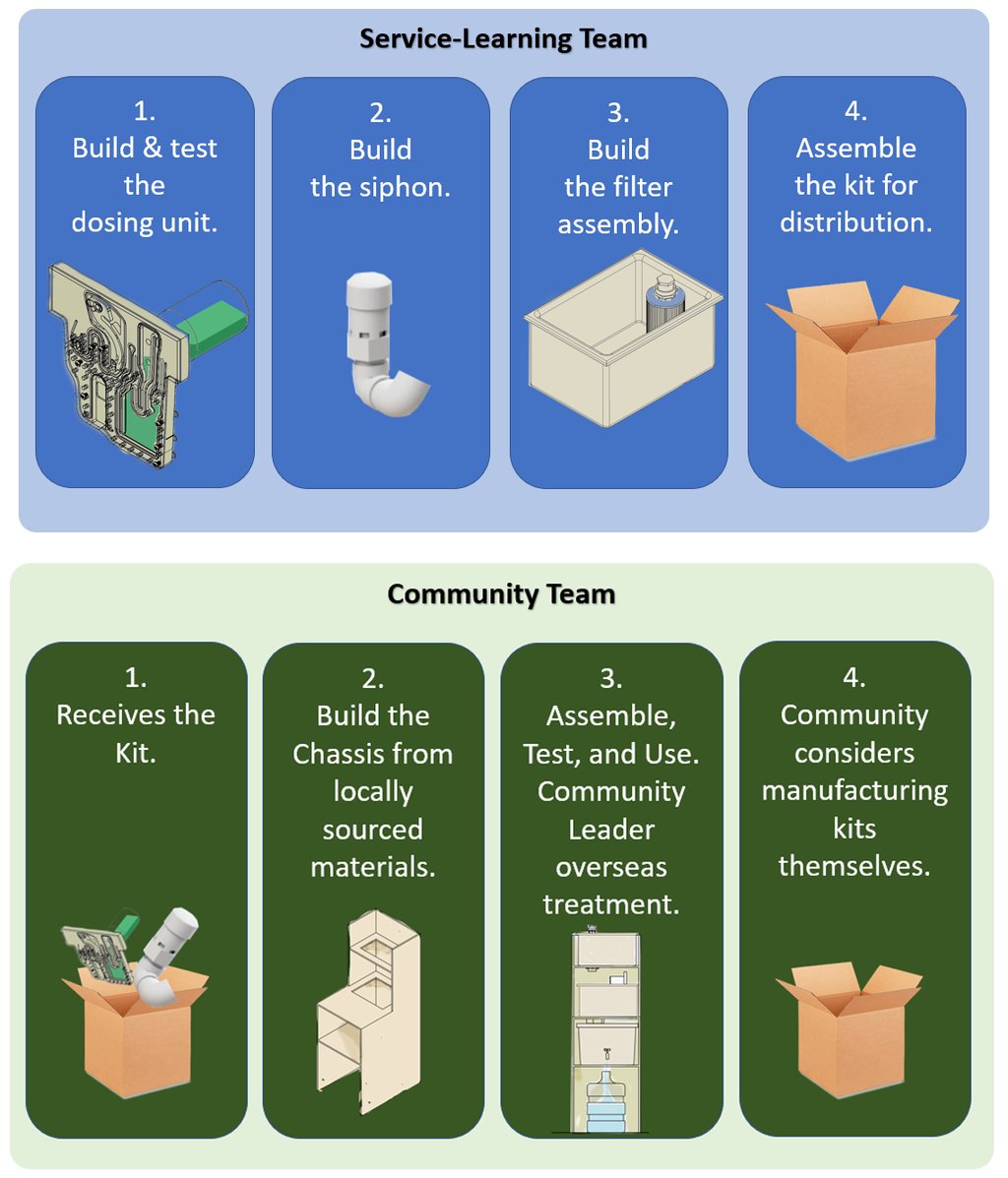Service Learning
Due to the pre-manufactured components, the transparency of the components, and ease of understanding, this device works for service learning. Schools and/or communities with access to a maker space can build this device. From there, communities can build their own businesses.
Students in manufacturing and design can learn table top CNC skills and properties of plastics. Students studying fluids can learn and visually see hydrostatic principles. Chemistry or environmental engineering students may learn about water treatment concepts.
Research on other manufacturing strategies provide opportunities for service learning too. For instance, 3D printing components, friction welding components, or utilization of 5-gallon buckets are opportunities for research.
Opportunities to connect learning institutions across cultural bounds exist. Schools and communities in different countries or locations can collaborate. Local businesses may be set up to manufacture the unit as all the components are affordable. Even tools needed to build the device are cost-efficient. For instance, a CNC machine using opensource GRBL code and replaceable parts is accessible.
Collaboration
Components are packed and Shipped
After a service learning team manufactures the components using a maker space, the parts fit into a box for distribution. From there, a local community assembles the device. Troubleshooting is easy and understandable.
The Process Overview
The general process involves a service-learning team that manufactures and builds components. The components can be assembled into a kit for distribution. After the kit is distributed to a community, it is assembled. From there, local communities may consider starting their own businesses to make and manufacture the device.


